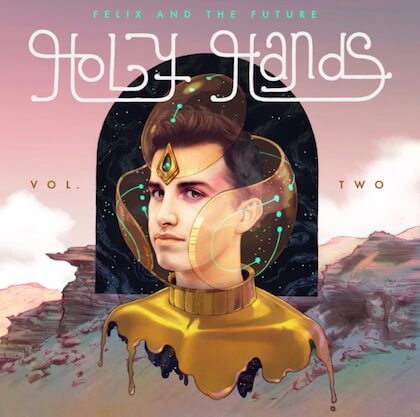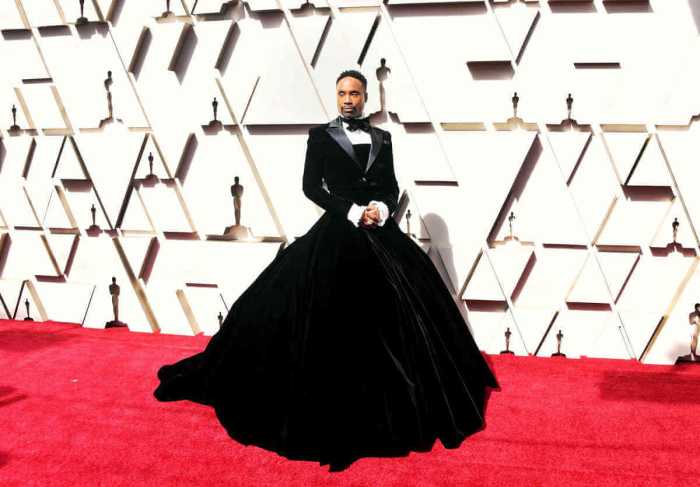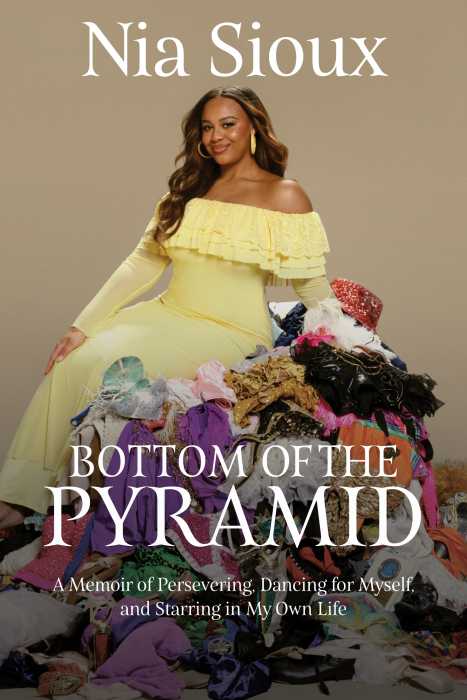FELIXANDTHEFUTURE.COM
The out gay one-man band Felix and the Future has been recording for seven years now, but “Holy Hands, Vol. Two” is his debut album. It’s a direct follow-up to last year’s “Holy Hands, Vol. 1” EP and includes the previously released single “A Good Son.” Felix and the Future has also, in the past, released the singles “Drive” and “Family Tree.” Image is a huge part of his act, and he considers his videos as important as his music.
“Holy Hands, Vol. Two” is an ambitious statement: a dystopian sci-fi concept album, with song titles like “Intergalactic Banshee,” “MoonMan,” and “A Voice From the Future.” The inspiration of early ’70s David Bowie, particularly his albums “Ziggy Stardust” and “Diamond Dogs,” hangs over it, but so does Lady Gaga and Klaus Nomi. Felix has covered Kate Bush’s “Hounds of Love,” and his song “Karen” quotes a line from “Ice Cream Castles,” by Prince protégés The Time.
The album opens and closes with “Karen,” describing an ambivalent attraction to a woman who embodies power. As Felix sings about Karen, she could represent the pull of substance abuse, a dangerous lover, or malign political forces. He relates, “With friends like you, I’d rather be six feet deep.” Still, he can’t pull himself away from her, and he offers to let her ride his coattails. The song has a tinge of misogyny and slut-shaming, as it attacks Karen for showing her breasts and tells her she doesn’t need to spread her legs. But in the end, “Karen” relates a complex and mutually destructive relationship, whose full nastiness is belied by the tune’s catchiness.
Felix and the Future, in debut album, combines pop mood with dark messages
The video for “Karen,” co-directed by Felix and Michael Saint-Onge (who also shot it), exorcises a lot of the demons of Felix’s repressive Mexican-American Catholic upbringing. Filmed in a church, it depicts Felix as a cleric, a chorus of muscular men, and a deliberately grotesque drag queen in a garish blonde wig embodying Karen as she swills wine and crawls on the floor. Felix does not exactly look like a garden-variety priest: his hair is initially dyed an odd shade of gray, his face covered with glitter, and he goes through several changes of hair color, makeup, and costume. The fact that some extras are wearing partial blackface has caused some controversy; Felix has justified it by pointing to the futuristic conceit of the song and video and, essentially, saying “Karen” doesn’t take place on a world with America’s racist history. This seems like a cop-out: it would be more meaningful to consciously play with dodgy imagery in an attempt to comment on it. Felix has a level of ambition that wants to rival Lady Gaga’s bizarre image-mad videos on a DIY budget.
“Holy Hands, Vol. Two” relies entirely on electronics. “Karen” sets the stage for an album where Felix backs himself using fake strings, more obvious synthesized sounds, and a drum machine. The album draws on dance music genres like techno, but it also has a classic pop sensibility: Felix and the Future comes close to ‘80s groups like Soft Cell and the early music of the Eurythmics and Depeche Mode. “Intergalactic Banshee” is the album’s most experimental song, accompanying Felix’s voice with very sparing keyboards that get drowned out by his steadily building operatic swoon. The lyrics are full of references to false prophets in a sexed-up cyberpunk dystopia navigated by Felix. On “Candy Road,” Felix says he feels like “space trash on my knees/ wanting and waiting for things to pass.”
In a press statement, he said, “Each character and song brings him [the album’s fictional protagonist] further into deep space… Felix is so enthralled by how beautiful they are he doesn’t realize how far into space he has gone.”
The music sounds fairly upbeat, even anthemic, enough to be at home in a dance club. This project’s grimness isn’t fully apparent unless one listens to the words.
Felix’s voice is likely to be a deal-breaker for some listeners. It comes from a musical theater tradition rather than a rock vocal one. When Felix and the Future began in 2011, he tended to strain for notes he wasn’t yet capable of hitting. Since his earliest singles, he’s become a technically more accomplished singer, but his voice still constantly aims to reach the limits of its abilities.
Flirting with androgyny the way Felix does is out of fashion in most of the gay male community; he has zero interest in proudly proclaiming that he deserves equal rights because he’s normal and boring. Popular out gay singers like Troye Sivan and Sam Smith don’t wear makeup and dye their hair outrageous colors in their videos. Instead, Felix and the Future’s image and video connect with the drag scene and ‘70s glam rock. An occasional unsteadiness to his music and, more often, his vocals testify to the fact that he’s doing it all on his own. On the other hand, this sometimes leads to a raw quality that intriguingly contradicts the earworm-ready melodies. But closing “Holy Hands, Vol. Two” with a shorter “radio edit” of “Karen” may be overly ambitious right now.
Felix and the Future’s “Karen” video is at youtube.com/watch?v=dnyITj33Aqo.
FELIX AND THE FUTURE | “Holy Hands, Vol. Two” | Self-released | felixandthefuture.com






































